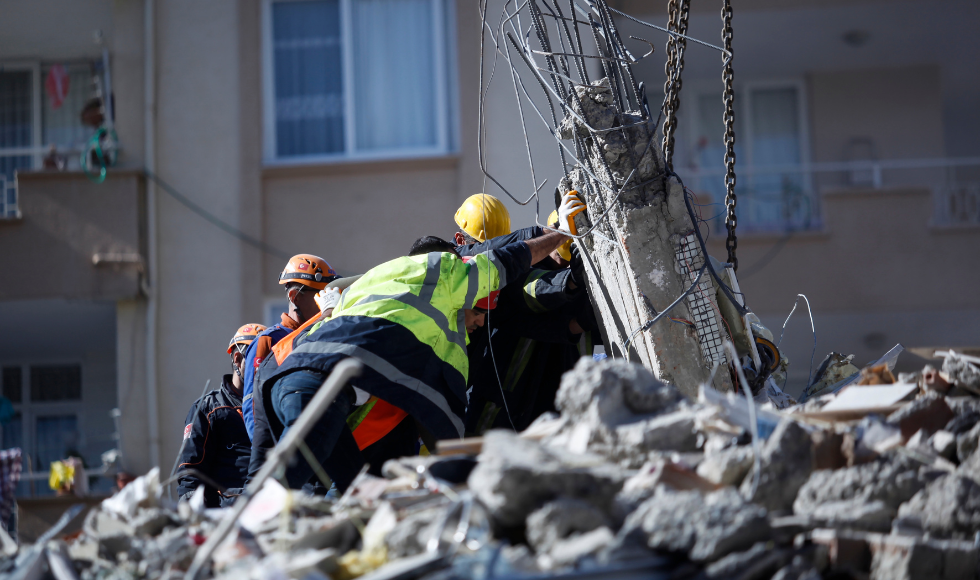Devastating earthquakes in Turkey and Syria highlight need for infrastructure standards, say McMaster civil engineering researchers

Emergency rescue workers in Adana, Turkey on February 6th following a series of earthquakes. Dramatic videos of multi-storey buildings collapsing have prompted questions about how construction standards in the region contributed to the number of catastrophic building failures. (Shutterstock)
BY Matt Innes-Leroux
February 9, 2023
The devastating scenes unfolding in Turkey and Syria following a series of earthquakes underscore the need for structural engineering standards, say two McMaster University civil engineering researchers.
Rescue teams from around the world are on the ground in the two countries to help search for survivors after the earthquakes killed more than 20,000 people and destroyed thousands of buildings.
A 7.8 magnitude earthquake on February 6th, one of the most powerful to hit the region in a century, was followed by a series of more than 100 aftershocks, including one at a magnitude of 7.5.
Dramatic videos of multi-storey buildings collapsing after the earthquakes have prompted questions about how construction standards in the region contributed to the number of catastrophic building failures.
McMaster civil engineering professors Lydell Wiebe and Cancan Yang spoke to CTV, CP24 and CHCH on the subject Tuesday.
“As a structural engineer I feel really bad seeing the devastating scenes from the videos,” said Yang, an assistant professor of civil engineering in an interview with CP24.
“At the same time this highlights the importance of building design and general infrastructure design to be more prepared in the face of an earthquake hazard.”
Yang added that Turkey updated building standards following a 7.6 magnitude earthquake that killed more than 17,000 people in 1999, but that buildings built before that update would not necessarily be up to the new standards.
In an interview with CHCH’s Trending Now, Wiebe, an associate professor of civil engineering, said the scale of the damage is far greater than what would be expected of buildings constructed in a modern area.
“We would expect huge loss to property from an earthquake like this, but we shouldn’t have anywhere near the number of collapses we have here,” said Wiebe.
“Earthquake engineering really matters. It’s what makes the difference between the kind of death toll we’re seeing now and what we would expect in places that have well-developed and well-enforced building codes,” he told CTV Toronto.
Yang pointed to the ongoing Syrian civil war and the poor state of infrastructure in that country as reasons why damage has been so widespread, adding that recovery will be complicated by a lack of resources.
“During the war when buildings are damaged, they would use low-quality material – basically whatever material was available – to repair those structures, and that just worsened their condition.”
“Syria doesn’t have the resources to respond to such an emergency and that’s something we have to think about,” she said.


